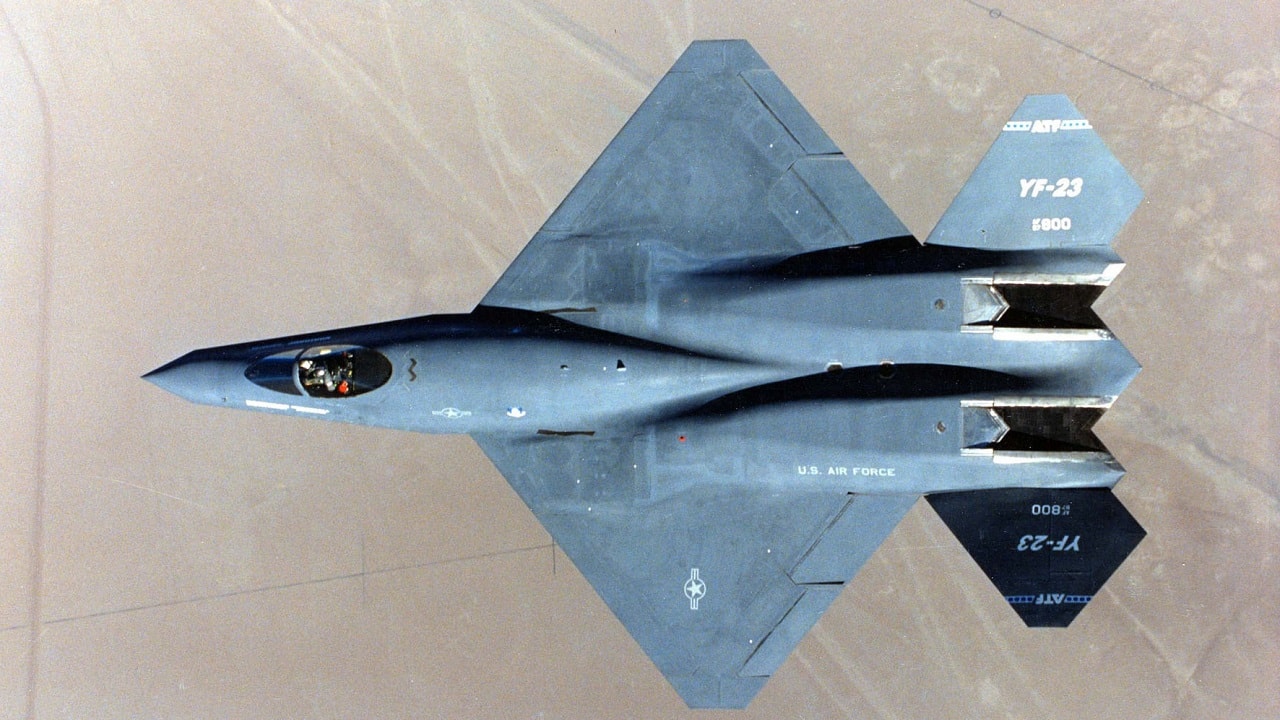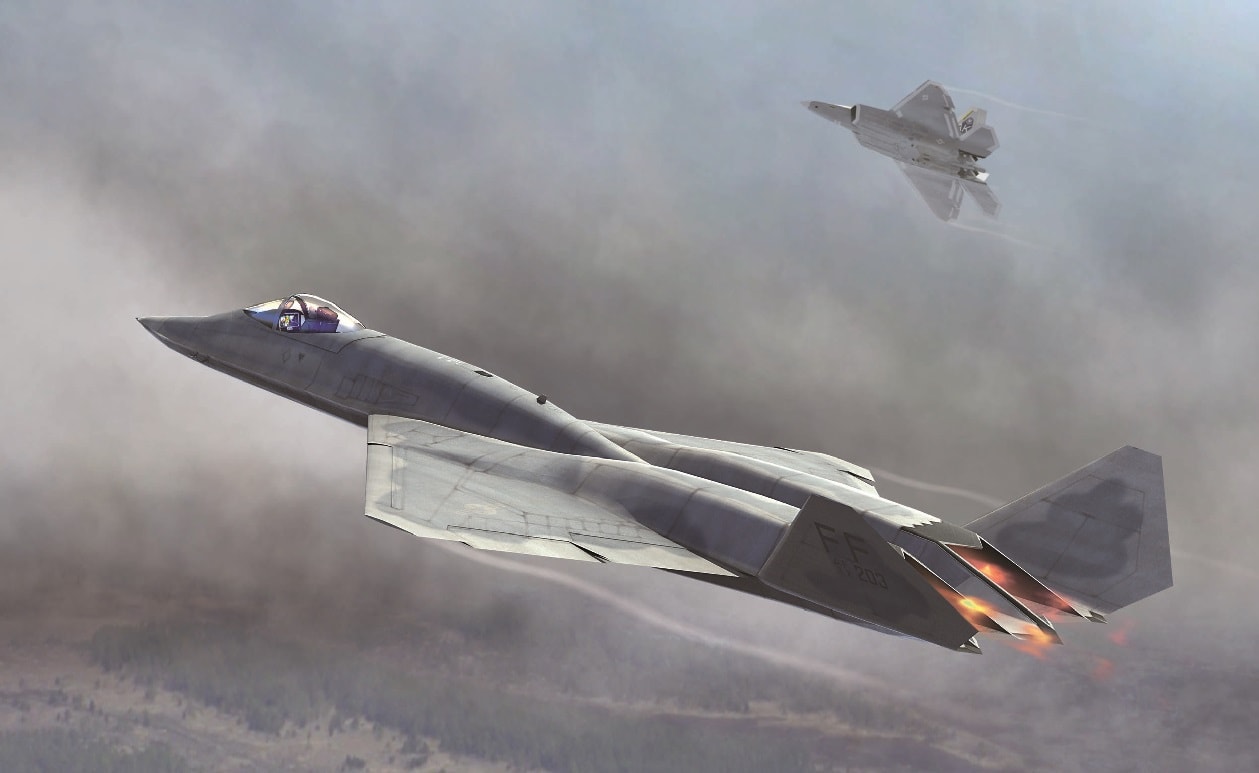
Northrop Grumman’s YF-23 Prototype was by all accounts an impressive machine with speeds of Mach 2.25 and a high 1.36 thrust-to-weight ratio
By Kris Osborn, President, Center for Military Modernization
Northrop Grumman’s YF-23 Prototype was by all accounts an impressive machine with speeds of Mach 2.25 and a high 1.36 thrust-to-weight ratio, yet the stealth fighter jet wound up “losing” an intense competition with the F-22.
The latter airframe became the US Air Force’s new air supremacy platform in the late 1980s.
The Pentagon urgently needed a new air supremacy platform as it was the height of the Cold War, and the Soviet Union had released the Su-27.
The new Soviet airframe, which now flies as the Su-35 4th-gen “PLUS” variant with significant upgrades, is a high-speed, high-tech, and capable aircraft with speeds greater than Mach 2 and one of the best thrust-to-weight ratios in the world. Statistics published by “World Defense” describe the Su-27 as having a thrust-to-weight ratio of 1.26 and the Su-35 as a very high 1.30 compared to an F-22’s 1.18.
However, mentioning that the same publication states that the F-22 can achieve a 1.37 thrust-to-weight ratio when using round nozzles is quite relevant.
YF-23 vs F-22
Some observers, experts, military weapons developers, and air war enthusiasts might be inclined to catapult back in time and analyze the Air Force’s decision to choose the F-22. Why was the F-22 considered superior to the very capable, stealthy YF-23? Exact answers are unlikely to be found as there were likely many variables informing this kind of decision, yet a retrospective look at this does raise relevant questions.
The YF-23 now sits in a museum, and some have questioned whether it was stealthier than an F-22. The YF-23 has a flattened wing-body blended fuselage and a smooth exterior, yet it does not appear stealthier than an F-22 to the naked eye.

Image of YF-23, which looks similar to the fictional F-52 in Call of Duty.
The YF-23 has jagged, angular structures in the back end, fins, and sharp protruding wing-like points likely to generate a strong, clear radar return signal. Tadar works by bouncing electromagnetic “pings” off an object while traveling at the speed of light.
Sharp angles and protruding structures provide more areas, contours, and shapes for an electromagnetic return signal to generate a rendering or image.
These protruding structures on the YF-23 may make it less stealthy than a rounded F-22, which has fewer and smaller protruding angles in addition to a blended wing body. Regarding stealth, however, there are many other factors, such as radar-absorbing materials and thermal or “heat signature” management.
Some written news assessments of the two aircraft suggest that the F-22 appeared more agile and maneuverable. This raises the question about the results of extensive testing that must have taken place with the two aircraft.
For example, one article says that the F-22 operates with a higher supercruise speed of Mach 1.8 than the YF-23s 1.6. Supercruise is quite significant, as it provides a window into the length of time a fighter can perform attacks and combat maneuvers without needing afterburning.
Time in supercruise means things like dwell time or air combat engagement time at optimal levels may be longer for the F-22, suggesting it might outlast a YF-23. This might explain why, in terms of pure dogfighting and aerial maneuverability, the F-22 won out and is still regarded by many as the best air supremacy platform in the world.

YF-23A Artist Rendering. Image Credit: Creative Commons.
There are likely other key variables less visible to an observer, such as sensing, computing, weapons guidance, and upgradeability. The F-22, for instance, has been upgraded many times over the years and continues to show great promise as a 5th-gen fighter able to surge decades into the future without losing its advantage.
About the Author: Kris Osborn
Kris Osborn is the Military Technology Editor of 19FortyFive and President of Warrior Maven – Center for Military Modernization. Osborn previously served at the Pentagon as a highly qualified expert in the Office of the Assistant Secretary of the Army—Acquisition, Logistics & Technology. Osborn has also worked as an anchor and on-air military specialist at national TV networks. He has appeared as a guest military expert on Fox News, MSNBC, The Military Channel, and The History Channel. He also has a Masters Degree in Comparative Literature from Columbia University.

